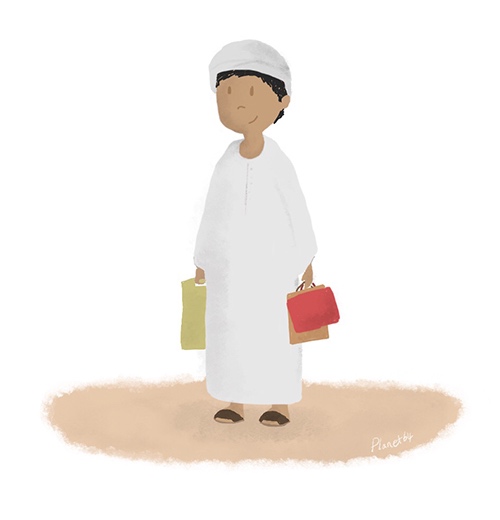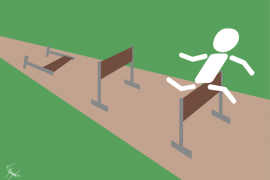Ever realized the reasons behind why people go to shopping malls in the UAE? And how many academic researchers have had input into this analysis? Let’s find out more.

Mall visits can be spontaneous and do not need any planning and this makes them easier to do. Dholakia (1999, p. 155) identified three main motives for shopping: utilitarian, family or social interaction, and shopping as a pleasure activity in its own right with social and relaxation dimensions. Shopping malls are becoming a place for socializing and recreation besides shopping. People visiting the malls see them as places for various purposes, as consumers can find stores, food courts, restaurants, cinemas, children’s play areas, interactive entertainment, social use areas, relaxation spaces and promotional areas, which are now major components of any mall (Terblanche, 1999).
In the UAE, the retail sector has grown rapidly in the past couple of decades. The UAE residents and visitors can easily see the growing movement in establishing shopping malls all over the country. For example, The Dubai Mall is a nine million square foot shopping center, which is the largest mall in the world (Andersen, 2003).
Few empirical studies have analyzed the motivations that explain consumers’ attraction to shopping malls (Bodkin & Lord, 1997). Economic motives are a core reason why the shoppers were attracted to malls. Moreover, emotional motives can bring shoppers to the mall; the pleasure of consuming in particular sites of consumption creates excitement and visual pleasure (Featherstone, 2007). Multi-purpose shoppers have a combination of economic and emotional motives (Ruiz, Chebat, & Hansen, 2004). There are other motives: for example, convenience; the presence of a specific store in the mall; services; and prices. Some researchers found that Chilean consumers’ mall visits were driven, primarily, by purchasing factors, while consumers in the USA visited their mall for more diverse reasons, largely revolving around entertainment (Bodkin & Lord, 1997; J. Nicholls, Li, Mandokovic, Roslow, & Kranendonk, 2000). Other researchers examined the effect of the physical environment of the mall on consumers’ emotional states and found that malls were viewed by consumers as places not only for shopping, but also for other activities, such as entertainment (Bloch, Ridgway, & Dawson, 1994).
Along the same line of thought, Nicholls and Kranendok (2002) found that today’s mall patrons tend to be more leisure-driven than shoppers in the early 1990s. Furthermore, Wakefield & Baker (1998) found that the mall environment influences the desire of the shopper to stay. Another researcher suggested that shopping malls aim to be mainly functional, recreational, social, and convenient places (Terblanche, 1999). These suggestions were based on the perceived benefits that consumers enjoy when visiting a regional shopping center. The demographic and psychological characteristics of mall patrons have also been described in the referenced research: (Bellenger, 1977).
The study of consumption and consumers has become independent and recognized as worthy of attention. It helps to understand consumer behaviors, expectations, and desire. Mall developers attract consumers through the promise of wide assortments of stores and services available in a single location (Bloch et al., 1994). These include restaurants, art exhibits, movie theaters, hair salons, clinics, play areas and fast food corners. Moreover, visitors do not only consume products and services but also find experiences that are consumable. The act of consuming objects is itself a sign of personal and social identity (Cooper, Timothy, & Hall, 2005). Indoor malls offer comfort and freedom from the noise and traffic of outside. The interiors of malls have evolved to be comfortable yet mediocre spaces (Bloch et al., 1994).
The United Arab Emirates was ranked amongst the top five countries worldwide for consumer purchasing power of luxury goods, clothes, and accessories, and as the upper social class adapts to luxurious items, they associate a brand meaning to society. Malls are more than places to buy products; they are places for social interaction, particularly in a country such as the United Arab Emirates, as the climate has made indoors, air-conditioned malls preferable for many members of the public. That is why it is not surprising that people choose shopping malls to spend their free time as they find everything they want in one place and family members or friends can do different activities in one space.
References
- ANDERSEN, C. 2003. EMAAR announces „Dubai Mall‟ the world’s largest shopping centre.
- BELLENGER, D. N. 1977. Shopping Centre Patronage Motives. Journal of Retailing, 53, 19-38.
- BLOCH, P. H., RIDGWAY, N. M. & DAWSON, S. A. 1994. The shopping mall as consumer habitat. Journal of retailing, 70, 23-42.
- BODKIN, C. D. & LORD, J. D. 1997. Attraction of power shopping centres. The International
- Clevedon, Channel View Publications.Consumer Marketing, 19, 149-65.
- COOPER, C., TIMOTHY, D. J. & HALL, C. M. 2005. Shopping Tourism, Retailing and Leisure,
- DHOLAKIA, R. R. 1999. Going shopping: key determinants of shopping behaviors and
- FEATHERSTONE, M. 2007. Consumer culture and postmodernism, London, SAGE Publications
- Limited. motivations. International Journal of Retail & Distribution Management, 27, 154-165
- NICHOLLS & KRANENDOK 2002. The seven year itch? Mall shoppers across time. Journal of
- Review of Retail, Distribution and Consumer Research, 7, 93-108.
- RUIZ, J.-P., CHEBAT, J.-C. & HANSEN, P. 2004. Another trip to the mall: a segmentation study of customers based on their activities. Journal of Retailing and Consumer Services, 11, 333-350.
- TERBLANCHE 1999. The perceived benefits derived from visits to a super regional shopping centre: an exploratory study. South Africa Journal of Business Managment 30, 141-6.
- WAKEFIELD, K. L. & BAKER, J. 1998. Excitement at the mall: determinants and effects on shopping response. Journal of retailing, 74, 515-539.




This is good website to learn more about UAE…it's informative! thanks!